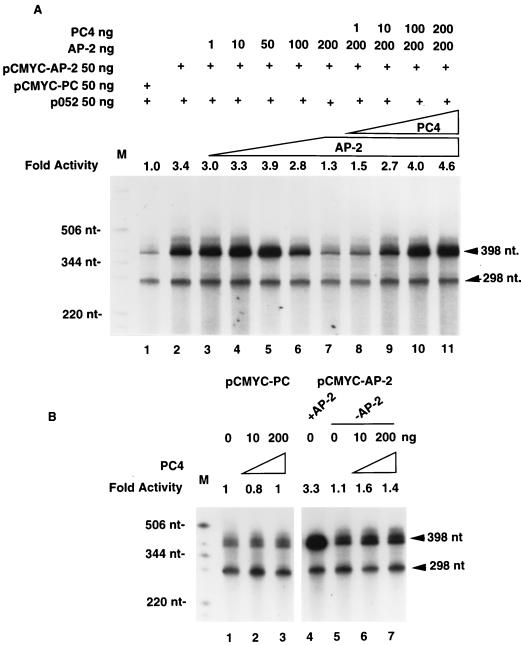FIG. 4.
PC4 relieves AP-2 transcriptional self-interference in vitro. In vitro transcription reactions using HeLa cell nuclear extracts were performed as described in Materials and Methods. The template plasmids used in each assay are indicated at the top. The amount of recombinant AP-2 protein or recombinant PC4 protein added to each in vitro transcription reaction is shown. A 398-nt transcription product from pcmyc-PC or pcmyc-AP-2 and a 298-nt transcription product from the control plasmid, p052, are shown on the right. End-labeled nucleotide markers (M) are marked on the left. The fold activity was calculated by scanning the autoradiographic image of the 398-nt transcripts with a DU70 spectrophotometer (Beckman Instruments Inc., Fullerton, Calif.), assuming the transcriptional activity of the parental plasmid pcmyc-PC to be 1. The values shown on each lane are adjusted for the 298-nt transcript of the internal control. (A) PC4 restores AP-2 transcription. (B) PC4 does not affect the expression of plasmid pcmyc-AP-2 in the absence of AP-2 protein and the expression of the parental plasmid pcmyc-PC. +AP-2, HeLa cell nuclear extract containing endogenous levels of AP-2 was used in the in vitro transcription assay; −AP-2, AP-2-depleted HeLa cell nuclear extract was used in the assays.

